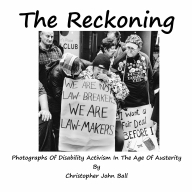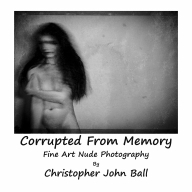
A Short Introduction to the Van Dyke or Brown Print by Christopher John Ball

Tweet
Emulsion
Ferric Ammonium Citrate ( green scales ): 2.5 grams
Oxalic Acid :0.4 grams
Silver Nitrate :1.0 grams
Distilled Water to Make: 30 mils
Mix in listed order. Larger amounts may be made by multiplying quantities by either 5 or 10. Store solution in a dark brown bottle and allow to mature, or age, over night.
Application and Exposure:
Spread the emulsion - on high quality, acid free, water colour paper - with a non metallic brush. This is very important as the metal will react and spoil the solution. Alternately use a Blanchard applicator.
Dry the coated paper with a hair dryer on a low setting. Be careful not to have it on a high setting as this will fog the emulsion.
Exposure is carried out under a rich Ultra-Violet light source or sunlight. Exposure is continued until details are visible in the highlights. Under exposure causes the image to be too pale. Over exposure causes shadow detail to be lost and the highlights to discolour.
Developer
Borax : 7 grams
Hot Water to Make : 1 LitreDevelop in the above solution for 5 minutes. The print will appear too flat, with some highlight fog and weak shadow detail after development. Don't worry this is corrected in the fixing stage.
Rinse the developed print in water for four minutes.
Fixer
Sodium Thiosulphate : 15 grams
Water to Make : 1 Litre.
Use the above formulae to make two fixing baths. Fix for five minutes or until the highlights are clear. Over fixing will bleach and reduce the image too much. Though this can be useful for a print that has been overexposed.
The colour of the print will darken to a blackish brown in the fixer. Once this colour change has occurred and the highlights are cleared, remove from the fixer so as not to bleach the print.
For greater permanence, the print can be placed in a hypo clearing solution for about 5 minutes.
The next stage is to wash the print in running water for a minimum of 30 minutes, longer if the temperature of the water is low.
The final stage is to allow the print to dry naturally.
July 2024 Several books, featuring Christopher John Ball's photographs, are now available through Amazon or click on an image below to purchase via secure payments on lulu.com

Tweet








